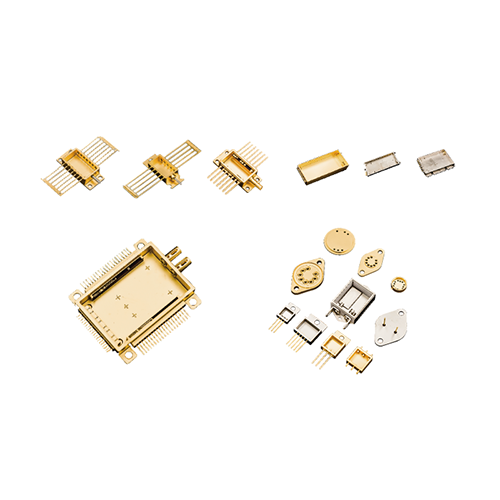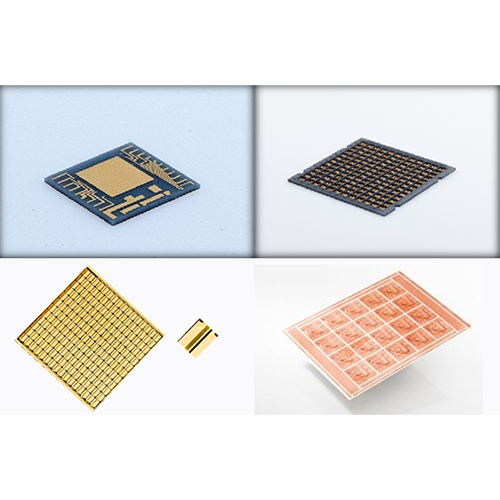

Ceramic Substrate
DPC Ceramic Substrate
The DPC(Direct Plating Copper, DPC)ceramic substrate adopts the DPC manufacturing process. The DPC ceramic substrate uses the direct copper plating (DPC) process, the substrate surface is metallized by evaporation, magnetron sputtering and other surface deposition processes. First, titanium is sputtered under vacuum conditions. , chromium and then copper particles, and finally thickened by electroplating, then the circuit production is completed by ordinary pcb process, and finally the thickness of the circuit is increased by electroplating/electroless plating deposition.
Advantages:
Small size,
Precise structure and Integrated design
High insulation, high thermal conductivity and heat resistance, low expansion
Application:
5G communication
Industrial RF
High power LED
hybrid integrated circuit
Material:
ALN
AL2O3
DBC Ceramic Substrate
DBC(Directly bonded copper) substrate is coated on one or both sides of the highly insulating Al2O3 or AlN ceramic substrate, and then heated at a high temperature of 1065~1085°C to make the copper metal due to high temperature oxidation, diffusion and The Al2O3 material produces (Eutectic) eutectic melt, which bonds copper and gold to the ceramic substrate to form a ceramic composite metal substrate. Finally, according to the circuit design, the circuit is prepared by etching.
Advantages:
Good thermal performance
coefficient of thermal expansion matching with Si
Simple process
Strong adhesion
Strong current carrying capacity
Application:
. 1. Insulated gate bipolar transistor (IGBT)
2. Automobile
3. Aerospace
4. Solar cells
5. Laser system
Material:
ALN
AL2O3
AMB Ceramic Substrate
Active Metal Bonding, active metal brazing copper clad technology,Active Metal Brazing, the active metal brazing process is a further development of the DBC process technology. It uses a small amount of active elements contained in the solder to react with ceramics to form a reaction layer that can be wetted by liquid solder, thereby realizing ceramics and ceramics. A method of joining metals.
Material:
ALN
Si3N4

